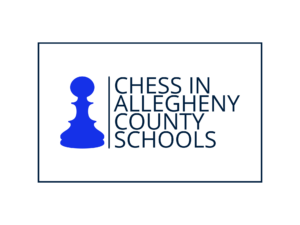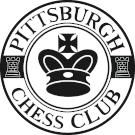 The Pittsburgh Chess Club manages the Chess in Allegheny County Schools program (CIACS), which has the primary goal of encouraging chess education in schools across the county. We work with schools to deliver in-person instruction, learning materials, tournaments, and equipment. This is made possible through public funding and charitable giving to the CIACS Fund.
The Pittsburgh Chess Club manages the Chess in Allegheny County Schools program (CIACS), which has the primary goal of encouraging chess education in schools across the county. We work with schools to deliver in-person instruction, learning materials, tournaments, and equipment. This is made possible through public funding and charitable giving to the CIACS Fund.
Interested schools can sign up using our online form. You can also reach us via email at [email protected]
Why Offer Chess in Schools?
Our goal with the CIACS program is to help local schools start and sustain their chess clubs, resolve financial constraints, and/or find support from chess organizers and instructors. School chess clubs provide many benefits to students and schools, including academic performance through:
- Focusing – Children are taught the benefits of observing carefully and concentrating. If they don’t watch what is happening, they can’t respond to it, no matter how smart they are.
- Visualizing – Children are prompted to imagine a sequence of actions before it happens. We actually strengthen the ability to visualize by training them to shift the pieces in their mind, first one, then several moves ahead.
- Thinking Ahead – Children are taught to think first, then act. We teach them to ask themselves “If I do this, what might happen then, and how can I respond?” Over time, chess helps develop patience and thoughtfulness.
- Weighing Options – Children are taught that they don’t have to do the first thing that pops into their mind. They learn to identify alternatives and consider the pros and cons of various actions.
- Analyzing Concretely – Children learn to evaluate the results of specific actions and sequences. Does this sequence help me or hurt me? Decisions are better when guided by logic, rather than impulse.
- Thinking Abstractly – Children are taught to step back periodically from details and consider the bigger picture. They also learn to take patterns used in one context and apply them to different, but related situations.
- Planning – Children are taught to develop longer range goals and take steps toward bringing them about. They are also taught of the need to reevaluate their plans as new developments change the situation.
- Juggling Multiple Considerations Simultaneously – Children are encouraged not to become overly absorbed in any one consideration, but to try to weigh various factors all at once.None of these skills are specific to chess, but they are all part of the game. The beauty of chess as a teaching tool is that it stimulates children’s minds and helps them to build these skills while enjoying themselves. As a result, children become more critical thinkers, better problem solvers, and more independent decision makers.
- Social Benefits – In the schools, chess often serves as a bridge, bringing together children of different ages, races and genders in an activity they can all enjoy. Chess helps build individual friendships and also school spirit when children compete together as teams against other schools. Chess also teaches children about sportsmanship – how to win graciously and not give up when encountering defeat. For children with adjustment issues, there are many examples where chess has led to increased motivation, improved behavior, better self-image, and even improved attendance. Chess provides a positive social outlet, a wholesome recreational activity that can be easily learned and enjoyed at any age.
These conclusions are supported by educational research. Studies have been done in various locations around the United States and Canada, showing that chess results in increased scores on standardized tests for both reading and math. A study on a large scale chess program in New York City, which involved more than 100 schools and 3,000 children, showed higher classroom grades in both English and Math for children involved in chess (Margulies, 1993). Studies in Houston, Texas and Bradford, Pennsylvania showed chess leads to higher scores on the Watson Glaser Critical Thinking Appraisal and the Torrance Tests of Creative Thinking (Ferguson, 1986).
- Margulies, S. (1992) The Effect of Chess on Reading Scores: District Nine Chess Program, Second Year Report. The American Chess Foundation, New York (pdf copy)
- Ferguson, R. (1986) Teaching the Fourth "R" (Reflective Reasoning) Through Chess. (pdf copy) (synopsis)
Additional Research - US Chess Federation Chess Research Bibliography
- St. Louis Chess Club Research Portal
- Chess.com Compilation Of Chess And Education Research Studies
Recommended Books
- Teaching Chess, Step by Step: Teacher's Manual by Igor Khmelnitsky
- Teaching Chess, Step by Step: Exercises by Igor Khmelnitsky, Michael Khodarkovsky, Michael Zadorozny
- Teaching Chess in the 21st Century by Todd Bardwick
- Chess Rules for Students (Workbook) by John Bain
- Chess Fundamentals by José Capablanca
- Back to Basics: Tactics by Dan Heisman
- Chess Tactics for Students by John Bain
- Checkmate! Ideas for Students by John Bain
Other Helpful Resources
- A Guide to Scholastic Chess. This guide was created to help teachers and scholastic chess organizers who wish to begin, improve, or strengthen their school chess program. It covers how to organize a school chess club, run tournaments, keep interest high, and generate administrative, school district, parental and public support.
- US Chess's Junior Tournament Player (JTP) Program. JTP events allow affiliates to run rated tournaments for groups of scholastic players where US Chess membership is not required.
- ChessKid.com Analysis Board (Free). This instructional tool can be used for demonstrating games and board positions.
- ChessKid.com Classroom Lesson Planner. The Classroom Planner is a week-by-week guide for teaching chess.
- You Don’t Need to Know Chess to Teach It! A small case study showing how ChessKid’s Classroom Planner helped a teacher and her students learn to play chess.
